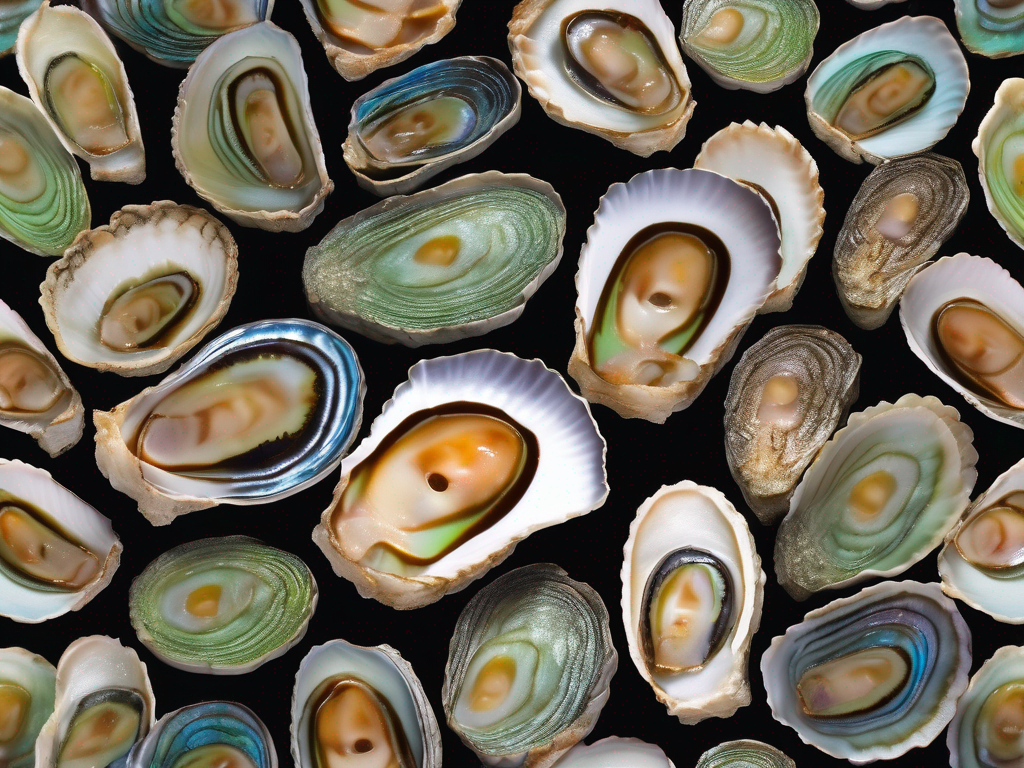
The Ultimate Guide to Properly Storing Fresh Abalone
The Ultimate Guide to Properly Storing Fresh Abalone
When it comes to enjoying the delicate and delectable taste of fresh abalone, proper storage is key to maintaining its quality and freshness. Abalone is a prized seafood delicacy known for its unique flavor and texture. To ensure that your abalone stays fresh and safe to eat, follow these essential tips for proper storage. (Abalone)
Food Storage Essentials
Products that help you store and preserve your food better
Disclosure: As an Amazon Associate, we earn from qualifying purchases. This helps support our site and allows us to continue providing free food safety information.
Understanding Abalone Storage
Before diving into the specifics of storing fresh abalone, it's important to understand the nature of this seafood delicacy. Abalone is a type of mollusk that is highly perishable once harvested. To preserve its freshness and flavor, proper storage methods must be followed. Abalone is best stored alive or in its shell until just before cooking to maintain its quality.
Factors Affecting Abalone Freshness
Several factors can impact the freshness and quality of abalone, including:
- Temperature: Abalone should be stored at a consistent and cold temperature to slow down bacterial growth.
- Moisture: Abalone should be kept moist to prevent dehydration and maintain its texture.
- Air Exposure: Abalone should be stored in airtight containers or packaging to prevent oxidation and spoilage.
Proper Storage Techniques for Fresh Abalone
Recommended Food Storage Products
Keep your food fresh and organized with these storage solutions
Disclosure: As an Amazon Associate, we earn from qualifying purchases. This helps support our site and allows us to continue providing free food safety information.
To maximize the freshness and shelf life of fresh abalone, follow these essential storage techniques:
1. Live Abalone Storage
If you purchase live abalone, follow these steps for proper storage:
- Keep the abalone alive until just before cooking.
- Store live abalone in a cool and well-ventilated container.
- Place a damp cloth or seaweed over the abalone to keep it moist.
- Avoid exposing live abalone to direct sunlight or heat.
2. Shucked Abalone Storage
If you have shucked abalone, follow these guidelines for proper storage:
- Store shucked abalone in an airtight container or vacuum-sealed bag.
- Keep the abalone refrigerated at a temperature of 32-38°F (0-3°C).
- Use the abalone within 1-2 days for the best quality.
3. Frozen Abalone Storage
If you prefer to freeze abalone for later use, follow these steps for proper storage:
- Clean and prepare the abalone for freezing by removing the viscera and shell.
- Place the abalone in a freezer-safe container or vacuum-sealed bag.
- Label the container with the date of freezing.
- Store the abalone in the freezer at a temperature of 0°F (-18°C) for up to 3 months.
4. Canned Abalone Storage
Canned abalone is a convenient option for long-term storage. Follow these tips for storing canned abalone:
- Store canned abalone in a cool, dry place away from direct sunlight.
- Check the expiration date on the can and consume before it expires.
- Once opened, transfer any remaining canned abalone to an airtight container and refrigerate.
Safety Tips for Handling Abalone
In addition to proper storage techniques, it's essential to follow these safety tips when handling fresh abalone:
- Thawing Abalone Safely: If you're thawing frozen abalone, do so in the refrigerator to prevent the growth of harmful bacteria.
- Cooking Thoroughly: Always cook abalone thoroughly to an internal temperature of 145°F (63°C) to ensure it is safe to eat.
- Avoid Cross-Contamination: Keep raw abalone separate from other foods to prevent cross-contamination.
- Proper Hygiene: Wash your hands and cooking utensils thoroughly after handling abalone to reduce the risk of foodborne illness.
Conclusion
Properly storing fresh abalone is essential for maintaining its quality, flavor, and safety. By following the storage techniques and safety tips outlined in this guide, you can ensure that your abalone remains fresh and delicious for your culinary creations. Whether you prefer live, shucked, frozen, or canned abalone, understanding how to store each type correctly will help you enjoy this prized seafood delicacy to the fullest. Remember, freshness is key when it comes to savoring the unique taste of abalone. (Abalone)
Related Posts
Here are some other articles you might find helpful:
Food Storage Essentials We Love
Products that help you store and preserve your food better
Disclosure: As an Amazon Associate, we earn from qualifying purchases. This helps support our site and allows us to continue providing free food safety information.
Scan your food directly and get instant safety info using our AI-powered camera feature.




